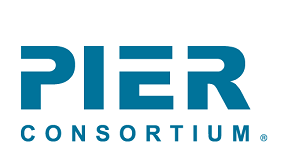FAQs for Sponsors
1. What are the advantages of working with the PIER consortium to conduct clinical trials?
PIER provides a single point of contact giving you access to multiple sites engaging millions of patients across a wide and diverse geographic area. Instead of multiple negotiations, contracts, budgets and sites to manage, there is one central PIER office to coordinate all activity. Streamlined communications reduce time and complexity. PIER’s centralized approach improves efficiency by reducing the burden on sites, which allows them to focus on recruitment and core study activities. The PIER approach focuses on consistent quality across sites with members approved SOPs, uniform training and quality assurance. Our network is composed of experienced study teams and a wide breadth of disease expertise.
2. What is the geographic scope of the PIER network?
PIER Sites are currently located throughout New Jersey and Pennsylvania.
3. What is the difference between a PIER Member and a PIER Affiliate?
FULL MEMBERSHIP:
- Voting Members on the Board of Members/Managers.
- Full participation on all committees.
- Priority selection for clinical trials.
- Eligible to receive research funds for PIER pilot projects and innovative clinical trials
- Access to training
AFFILIATES
- Access to clinical studies
- Inclusion on PIER Website
- Support of the PIER Central Office (PCO) for study initiation and management
- Quality outcome measures
- Opportunities to represent PIER on study committees and publications
- Access to training
- Future opportunities to move to full membership (must be a 501(c)(3) organization)
4. What is the difference between a PIER Member and a PIER Site?
“Member” refers to an institution or health system that is an official PIER partner. Each member may have multiple “Sites” with research activity advanced by Principal Investigators and study teams. The Site is the actual location conducting research within the member institution.
5. Who owns PIER?
PIER is a nonprofit limited liability company (LLC) formed to promote health sciences education and research. The Consortium formed exclusively for charitable, scientific and educational purposes. All consortium full members share in the governance and oversight of the organization.
6. What services does PIER provide to Full Members and Affiliates?
- PIER provides Core Services to include (but not limited to) biostatistics, grant proposal development, support for investigator-initiated project development, project and data management, training, workforce development pipeline program.
7. How is PIER managed?
The PIER Consortium’s Board of Managers is responsible for oversight of the consortium’s business. The Board is comprised of members who participate in shared decision-making and collaborate to develop policies and procedures.
8. What role do the Sites play in the PIER organization?
At each member institution, the Site’s participation is key to the success of PIER research. The Sites interact closely with the PIER Central Office (PCO) staff from study start-up through study closeout, providing documentation/data to the PCO as needed and conducting studies to the highest professional and quality standards. Once the study is approved and enrollment begins, Sites will conduct the research study and all associated clinical activities according to the Site’s internal standard operating procedures.
9. What services does PIER provide to Sites?
PIER performs all contracting, budgeting, and regulatory activities through a single entity. PIER allows sponsors to engage all the members without having to contract and negotiate with each one individually. PIER can negotiate legal agreements on behalf of the members. PIER also works with central IRBs to speed the entire study approval process. PIER submits the study for IRB approval and manages the IRB submission. Post-award financial management (invoicing, accounts receivable and accounts payable) are provided for the Sites by PIER, according to the approved budget.
10. How are Principal-Investigators (PIs) recommended for a study?
Each Member’s Physician-Investigator Advisory Committee representative or Research Office submits recommendations to the PIER Central Office. Each PI must have appropriate clinical and research experience relative to the proposed study. They must also have adequate resources, such as an experienced Clinical Research Coordinator.
11. Who determines if a Site is eligible to participate in a PIER study?
Selection is based on Sponsor preferences and factors such as:
- Previous performance in working on similar studies
- Qualifications established by the sponsor relevant to the specific study
- Available resources to adequately conduct research study
- Evaluation of past research performance and metrics.
12. Who makes the final decision on which Sites participate in a PIER study?
Site participation in a PIER study is voluntary. The decision by the PIER Consortium to pursue a study with a sponsor is a collaborative decision with input from the PIER Chief Operating Officer, the Physician-Investigator Advisory Committee, the member Central Research Office, potential principal investigators and study teams. The final decision to select Sites is made by the Sponsor.
PIER Central Office (PCO) Contacts:

